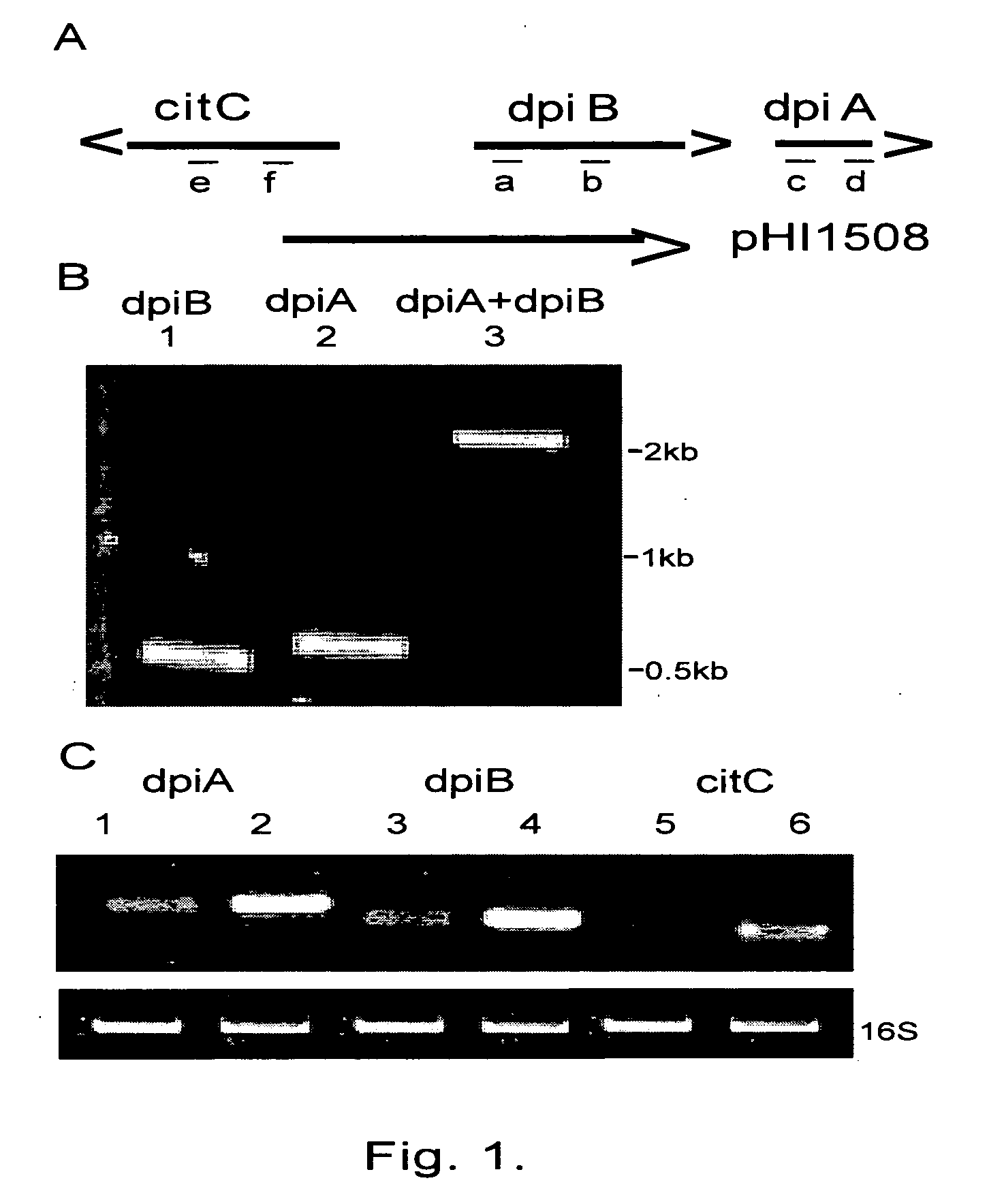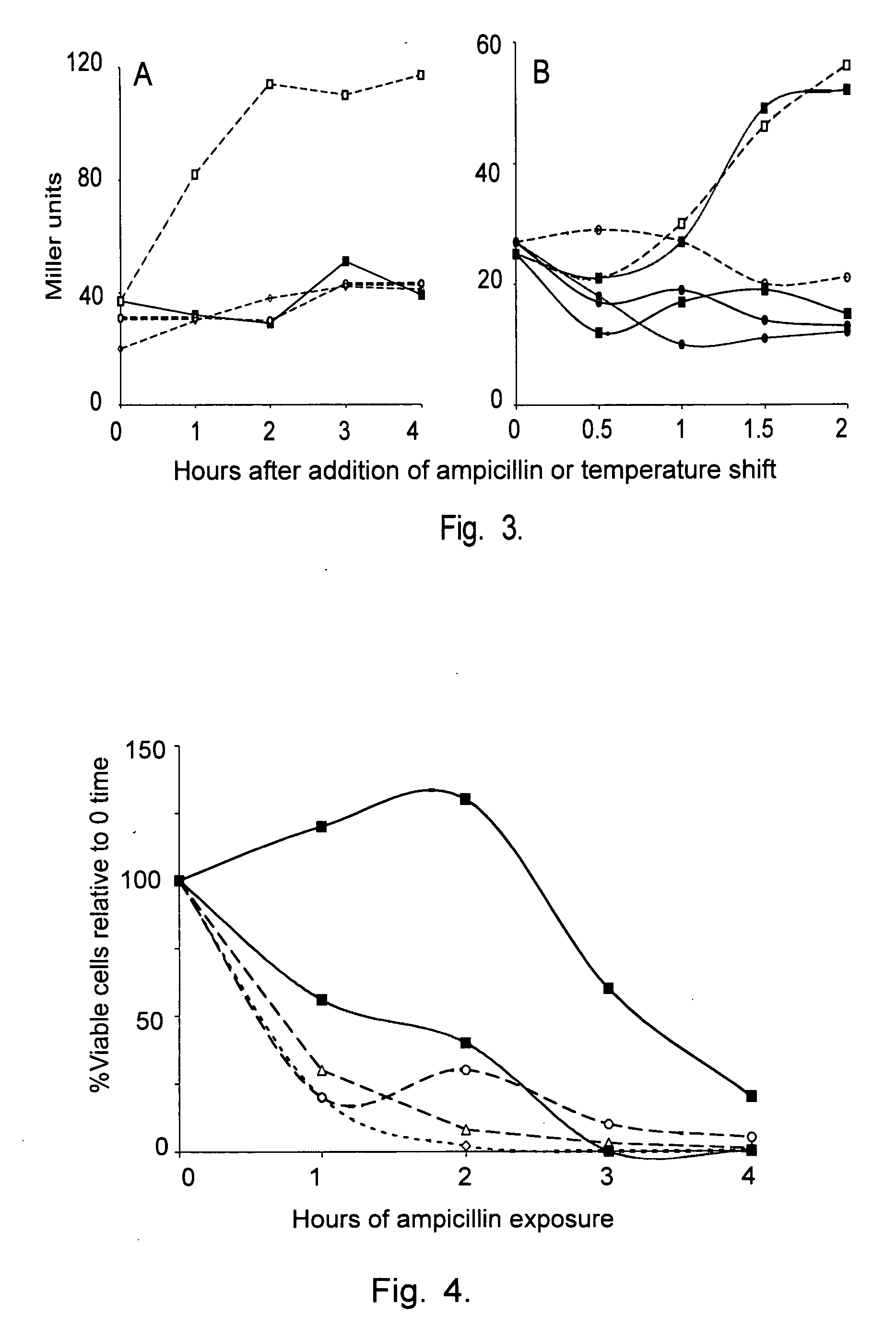Modulating SOS response induction by antimicrobial agents
a technology of antimicrobial agents and sos, applied in the field of multidrug-resistant pathogen emergence, can solve the problem of interference in induction with bacterial killing
- Summary
- Abstract
- Description
- Claims
- Application Information
AI Technical Summary
Benefits of technology
Problems solved by technology
Method used
Image
Examples
example 1
[0082] Two-component signal transduction systems have a key role in mediating the response of bacteria to environmental stimuli. Normally, receptor-mediated detection of a stimulus at the cell surface leads to autophosphorylation of a sensor kinase component, which then phosphorylates the effector protein component (i.e., the response regulator), enabling the effector to bind to operator / promoter sequences of target genes and either increase or repress transcription. DpiA, the effector for the DpiBA two-component system, not only regulates transcription but also regulates DNA replication and segregation by virtue of its uncommon ability to bind to A+T-rich sequences in the replication origins of the E. coli chromosome and certain plasmids. Interaction of DpiA with replication origins competes with binding of the replication proteins DnaA and DnaB: when overexpressed, DpiA can interrupt DNA replication and induce the SOS response, thereby inhibiting cell division.
[0083] Previous seq...
PUM
| Property | Measurement | Unit |
|---|---|---|
| Cell proliferation rate | aaaaa | aaaaa |
Abstract
Description
Claims
Application Information
 Login to View More
Login to View More - R&D
- Intellectual Property
- Life Sciences
- Materials
- Tech Scout
- Unparalleled Data Quality
- Higher Quality Content
- 60% Fewer Hallucinations
Browse by: Latest US Patents, China's latest patents, Technical Efficacy Thesaurus, Application Domain, Technology Topic, Popular Technical Reports.
© 2025 PatSnap. All rights reserved.Legal|Privacy policy|Modern Slavery Act Transparency Statement|Sitemap|About US| Contact US: help@patsnap.com



